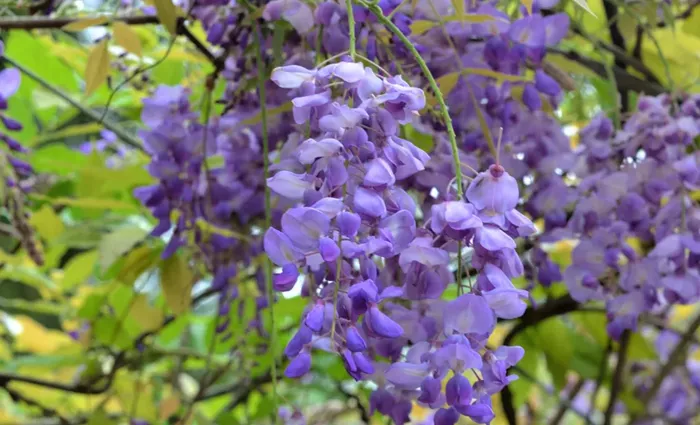Fall Care for Wisteria Plants: Essential Tips.
The Wisteria genus consists of a small group of four species. Three of these species are native to Asia, while the fourth, Wisteria frutescens, known as American wisteria, grows across many states in North America, including Virginia, Texas, and Florida. All species are valued for their fragrant clusters of purple or white flowers that bloom from late spring to early summer. These beautiful flowers often adorn garden walls, fences, and pergolas.
As fall approaches, it’s crucial to know how to care for wisteria. Shorter days and cooler temperatures signal the need for specific tasks to ensure these climbing plants thrive next year.
As a former professional gardener, I have cared for various wisteria types. Recently, I worked with Wisteria floribunda ‘Alba’, a Japanese wisteria, on a pergola in Tuscany. This hardy plant endures hot summers and cold winters. However, I followed key tasks in October and November as part of my fall routine. Below are my top tips for caring for wisteria in the fall.
1. Mulch Your Wisteria Plants
Wisteria plants are tough and can survive down to US hardiness zone 5, tolerating temperatures as low as -15°C (5°F). However, if you live in colder areas like Illinois, New York, Pennsylvania, or Michigan, it’s wise to protect the roots with mulch.
“Mulching in the fall is important for protecting the roots from winter cold,” says plant expert Katie Sunderlage. “This is especially crucial in regions where wisteria is near its hardiness limit, such as zone 4, which includes Montana, Alaska, North Dakota, and Minnesota.”
Mulching also helps retain moisture during dormancy and improves soil health for better blooming next year. Mulch and compost can be easily purchased online.
2. Tie in, but Don’t Prune Wisteria Stems
“Do not prune wisteria in the fall,” Sunderlage advises. “It’s better to wait until winter, around February, when the plant is fully dormant.” This makes it easier to see where to prune once the leaves have fallen, allowing you to enjoy the beautiful fall foliage.
While pruning should be avoided, it’s a good time to tie in any loose or unsupported wisteria stems. Fall weather can bring strong winds, so securing these stems helps protect your plant.
You can use affordable garden twine, available online, to loosely tie the stems to your trellis or fence. Be sure not to tie too tightly, as this can harm the plant.
3. Remove Wisteria Seed Pods
Some wisteria species can grow aggressively and may become invasive if not maintained. Wisteria sinensis, or Chinese wisteria, is particularly fast-growing and can cause issues if allowed to seed.
To prevent this, remove wisteria seed pods in the fall before they disperse and germinate in your yard. Trim the brown seed pods with clean, sharp tools, such as Felco pruning snips, and collect them in a bucket.
If you wish to grow more wisteria, save the seeds. If you don’t want more plants, dispose of the pods in your green waste. Avoid adding them to your compost heap, as they can sprout in the nutrient-rich soil.
Related topics:
- Kingsport Flower Shop Aims to ‘Petal It Forward’ to Spread Hope in the Community
- New Technology Aims to Boost Crop Yields and Enhance Plant Resilience
- Invasive Plants: Harmful to Your Garden and the Environment


